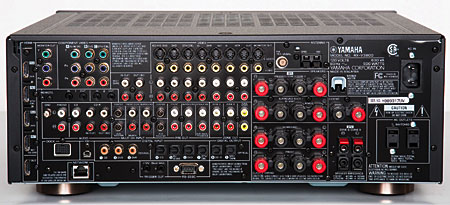Putting the “V” in Your AVR Yamaha RX-V3800
Yamaha provided its top two AVRs for the survey: the $5,499 flagship RX-Z11 and the $1,699 RX-V3800. Like the Denon offerings, Yamaha has included distinctly different video processing capabilities with its two entries.

The RX-V3800 is similar to most of the other AVRs in that it does not offer video processing of digital input signals. The digital input is ostensibly passed through without any video processing. But if that’s the case, the HDMI transmitter chip seems to be affecting the dynamic range of the image. Below-black and above-white information are being clipped from the video signal. We’ve seen this issue before with certain HDMI transmitter chips, so it is unclear whether the problem should be addressed at the video-processing level or the chip.

The RX-V3800 is advertised to include Anchor Bay’s ABT-1010 video-scaling solution, but the digital inputs weren’t being scaled. The analog side did offer scaling, though, and the results were pretty good. We did see a slight amount of ringing in our resolution charts and a hint of noise with both our luma and chroma tests, but all of the resolution was there. The analog inputs offered video processing of SD signals to HD resolutions, including deinterlacing 480i video. It is unclear what solution Yamaha is using for their deinterlacing, but it would only handle film-based material properly and not 480i video-based material.

Surprisingly, there was absolutely no processing for HD signals at all. Even with analog sources, the AVR would simply pass the video through. This is better than applying a video solution that cannot handle a 1080i source properly, but we would still like to see receivers move toward solutions that can at least deinterlace 1080i to 1080p now that there is so much 1080i broadcast HD out there.






























































